
TechJunkie Expert Recommendations
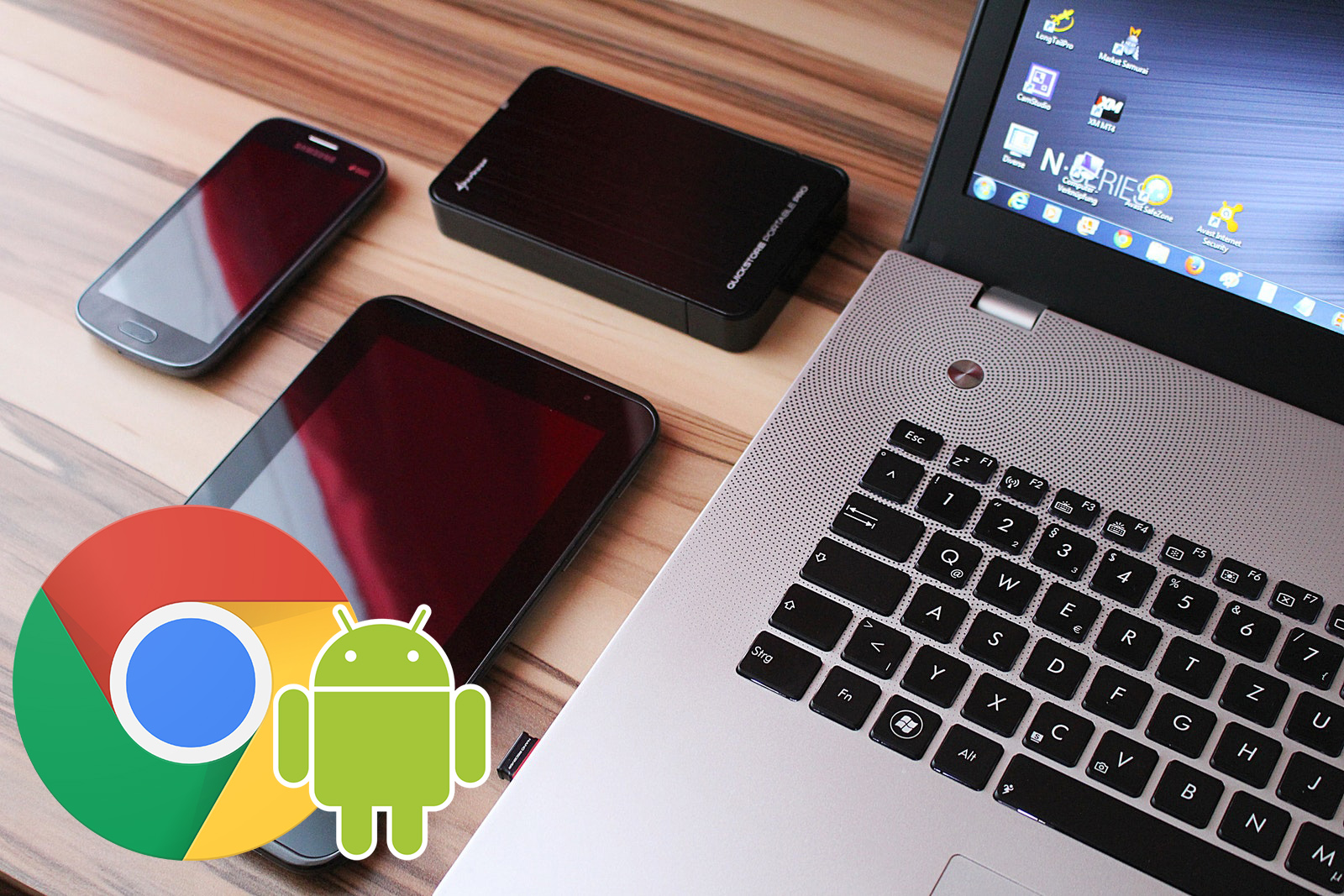
It wasn’t until 2012 when Chrome finally arrived on Android as a platform. Prior to this, Android devices used a basic browser that shipped with AOSP versions of Android not modified with Google software. Chrome arriving on Android marked a watershed moment in Google’s quest to achieve dominance in the mobile market. With Chrome’s popularity in the desktop sector, it made sense for Google to move their browser over to Android, along with the ability to sync bookmarks, tabs, history, and more. Since the creation of Chrome for Android, we’ve seen Google take their ecosystem to new heights. Nearly every application or platform developed by Google now comes with the ability to easily sync with everything else you do. In fact, Google’s fully-baked ecosystem is the reason plenty of technology enthusiasts stick with Android year-in and year-out, instead of switching to iOS.
When Chrome for Android was first released, Google developed an app called Chrome to Phone. The app allows you to push websites, directions, and notes from your desktop to your phone without having to send the content in an email or text message to yourself. Eventually, the ability to load recent taps from your desktop on Chrome for Android was added to the main app, and the desktop app was discontinued and marked as deprecated in 2015, before finally being shut down in March of 2016. Nearly two years later, and most Chrome users will likely find themselves making due with the Recent Tabs replacement inside of Chrome. Still, there’s an argument to be made that Chrome on your desktop and Chrome on your Android phone should sync better. Why can’t these apps allow you to view notifications from your Android device, or to respond to notifications sitting on your phone? Why can’t you use both devices to communicate, or to share items on your clipboard, or even move files between the two devices wirelessly?
Thankfully, Chrome’s extension market comes in handy here. While Google has lacked the ability to sync your Android phone to your Chrome browser outside of tabs and history for quite some time, other developers have come to the rescue. Several third-party options and extensions exist to help you get the most out of Chrome when synced with your Android device, and today, we’ll be taking a look at the best of them. These extensions are tried and tested, with millions of users and years of experience being on the market. So quit dealing with the subpar Chrome syncing experience offered by Google, and start taking advantage of the best sync protocol Android has to offer.
Compatible With




Pushbullet is one of the oldest apps available on the web that does what we’re looking for an app to accomplish, and it’s only gotten better since it originally launched. The Swiss Army Knife of Chrome extensions, this one can sync nearly every piece of content between your phone and your computer, making it ideal for anyone who spends their day working on a computer, or for the student who wants to check their phone while taking notes on a laptop. Although no longer available entirely for free, the value offered by Pushbullet still gives plenty of users an enjoyable, synced experience between your devices. Let’s take a look at everything offered by this legendary extension.
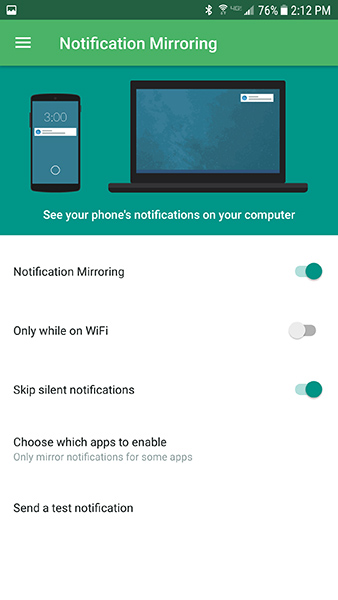
First, we should mention that Pushbullet has come a long way since its humble beginnings as a Chrome extension. In addition to the original Chrome and Android application, Pushbullet now support iOS and Windows, plus Firefox, Opera, and Safari. They’ve branched out, allowing basically any device to be synced through their browser or operating system. Still, Pushbullet works best with an Android device and the Chrome extension, and that’s what we recommend to most users looking to jump on board with this app. At it’s core, setting up Pushbullet is as easy as ensuring you have the Pushbullet app on your Android phone and the extension added to Chrome. Once those two pieces of software are installed on your device, you’ll be able to start syncing your work between devices. Simply enable notification access for Pushbullet on your phone and you’ll be good to go.
And the good news is Pushbullet syncs almost everything. The big one is notifications, allowing you to view all of your notifications on your computer through your browser. By default, all of your notifications are filtered through the app, though thankfully, you can disable how certain notifications work. Some notifications don’t work perfectly, like media playback that pops up on your display, but thankfully, those simply don’t automatically sync with your device. Text messages can be synced directly between devices, allowing you to access your phone’s entire message history right on your device through the Pushbullet web app. Other messages, through services like Facebook Messenger, Twitter, or WhatsApp, can also be replied to through your phone, though you won’t find your entire Messenger history stored in the web app. Being able to view your text message history in the web app is great though, and you can reply right within the app, or from the actual extension in your Chrome menu.
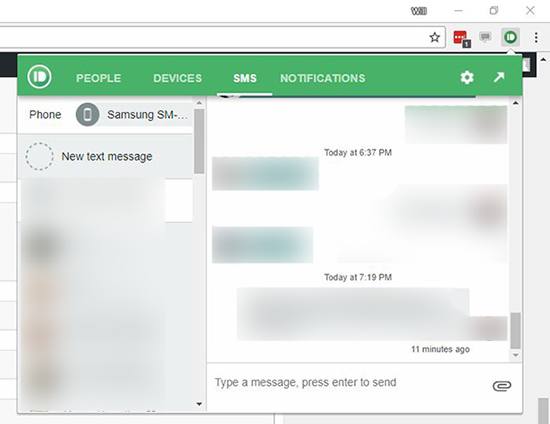
The extension itself works well. While notifications and messaging capabilities are two of the big features with Pushbullet, it’s worth pointing out that the original namesake feature of the app is the ability to push content between your devices. Both the extension and the web app have the ability to store multiple devices, which means you can push content between several devices at once, including your smartphone, your tablet, and other devices you’ve signed into using the Pushbullet Android app. Theoretically, this means you could also share content with, say, your child’s phone, while also being able to see their text messages and activity throughout the day. Even if you’re just using it for personal notes and files, the app works flawlessly to deliver notifications, files, links, text, and more.
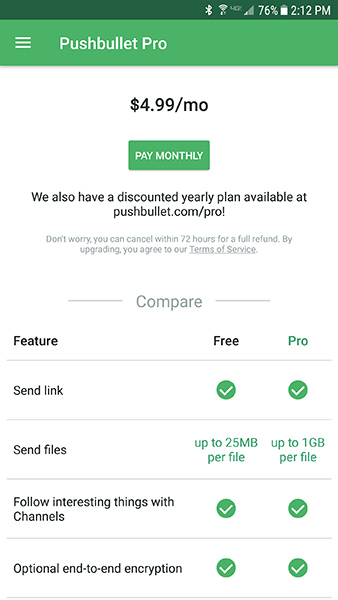
Of course, Pushbullet isn’t without some amount of flaws, and if you’re unwilling to pay for Pushbullet’s Pro upgrade, you’re likely to find it to be a mixed experience. For years, Pushbullet was free for use, but the company introduced a paid tier two years ago, limiting some features that were previously free to use in past versions of the app, including universal copy and paste. Reactions from the press and customers alike were negative, but the company kept strong with their original stance, and two years later, the same paid plans are still offered. The free version of Pushbullet gives you unlimited access to sending links and mirroring notifications on Android. You can send files up to 25MB per file, and your account is given a cloud storage access of 2GB. The free and paid app both include end-to-end encryption, but you can only reply to 100 messages per month in the paid version regardless of the messaging app used, and some applications can only be acted on with the paid account.
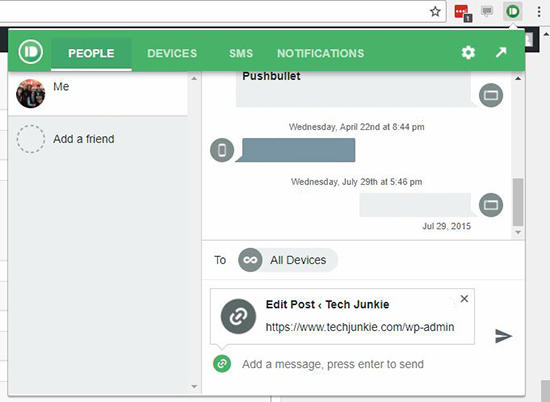
To build on top of that, the Pro version of Pushbullet ups your file size limit to 1GB, grants you 100GB of storage space, unlocks universal copy and paste shared between devices, and grants you unlimited actionable notifications and the ability to send unlimited messages from your computer. When it comes to pricing, Pushbullet will either charge you monthly or annually, depending on your selection and your budget. The plan starts at $3.33 per month charged annually for a total of $39.99 per year, but the monthly option is also available for $4.99 per month, for a total of about $60 per year.
Whether Pushbullet Pro is a worthwhile charge each year is really up to each consumer. For some, $40 per year grants you access to a full suite of productivity apps designed to increase your ability to work throughout the day from your PC while staying connected to your phone. It isn’t a perfect application, but it does happen to give users the ability to easily sync files, links, messages, and more between devices. Of course, your MacBook has synced with your iPhone for quite sometime, and with the newest update to Windows 10, you can sync your iPhone or Android device to your computer for some limited usage between apps without relying on a Chrome extension. Both of these options are available for free, which lowers the value of using Pushbullet with your device. Nothing is quite as fully-featured as combining an Android phone with Pushbullet Pro, but no doubt the cost of the app will turn off some users.
Compatible With




AirDroid manages to offer a lot of what we expect from Pushbullet, all at a reduced price that makes it a bit more appealing for those looking to sync their browser with their phone without dropping $5 per month on the application. Like Pushbullet, AirDroid offers a free tier and a premium tier for users, though at a reduced price both monthly and annually. At just $1.99 per month or $19.99 per year, the 50 percent (or more) reduction in price is an easy way to get Pushbullet-like functionality at a fraction of the cost. Though the basic application allows you to sync your device between your phone and your browser, the premium account adds unlimited file transfers, larger file size limitations (1GB with the desktop client, 100MB with the web client), multiple device support, remote camera, and more. Still, you can respond to messages and other notifications on your device for free with the standard version of the application, and the desktop interface included with the web app makes it ideal for users looking for a visual interface to interact with their files.
Compatible With
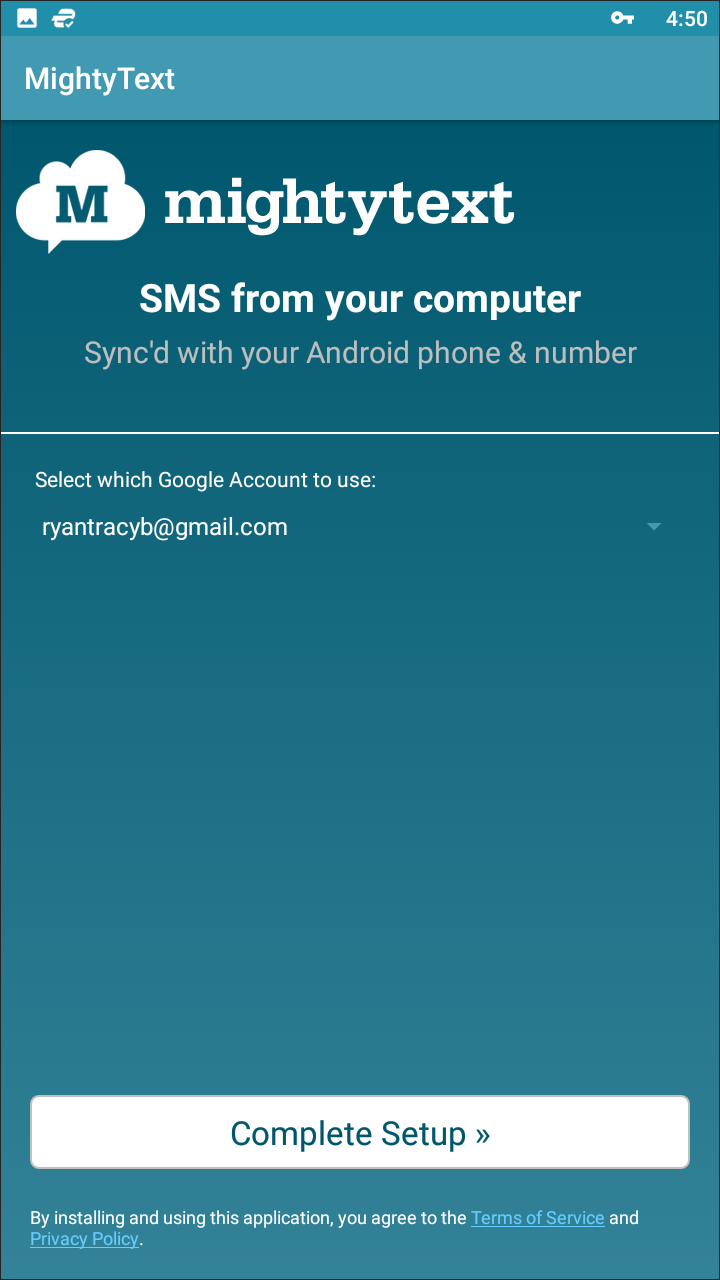
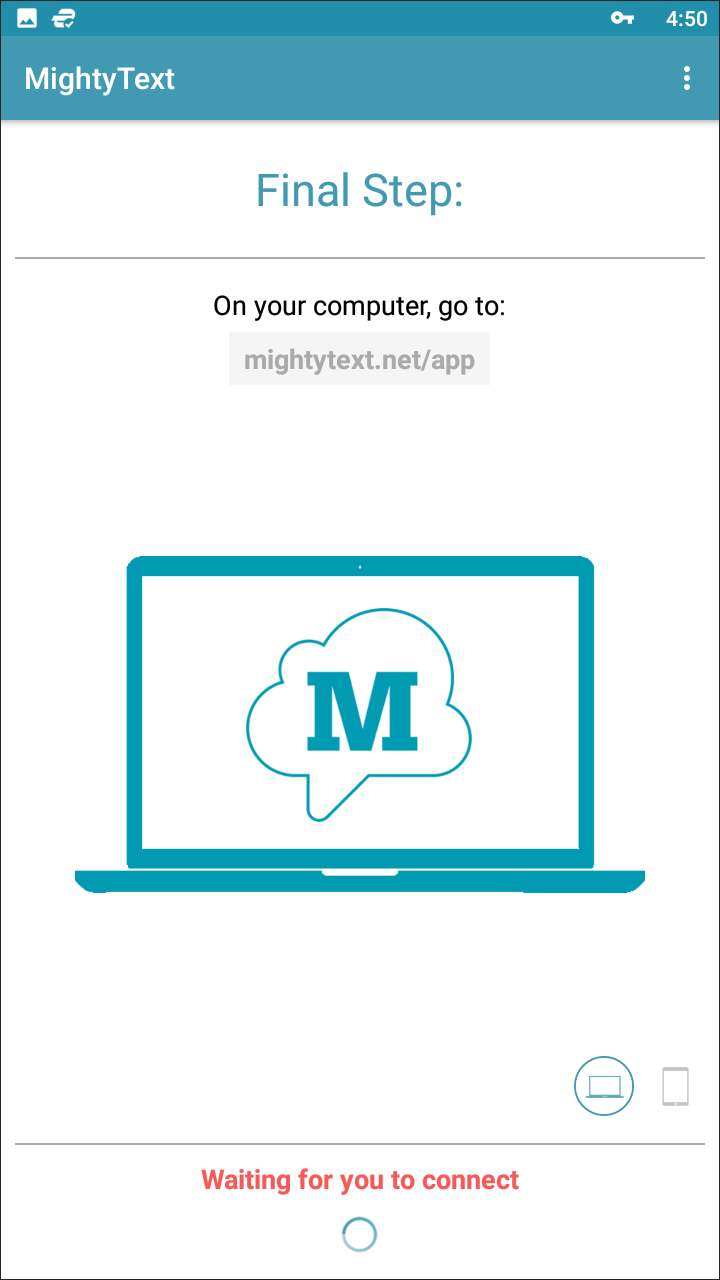
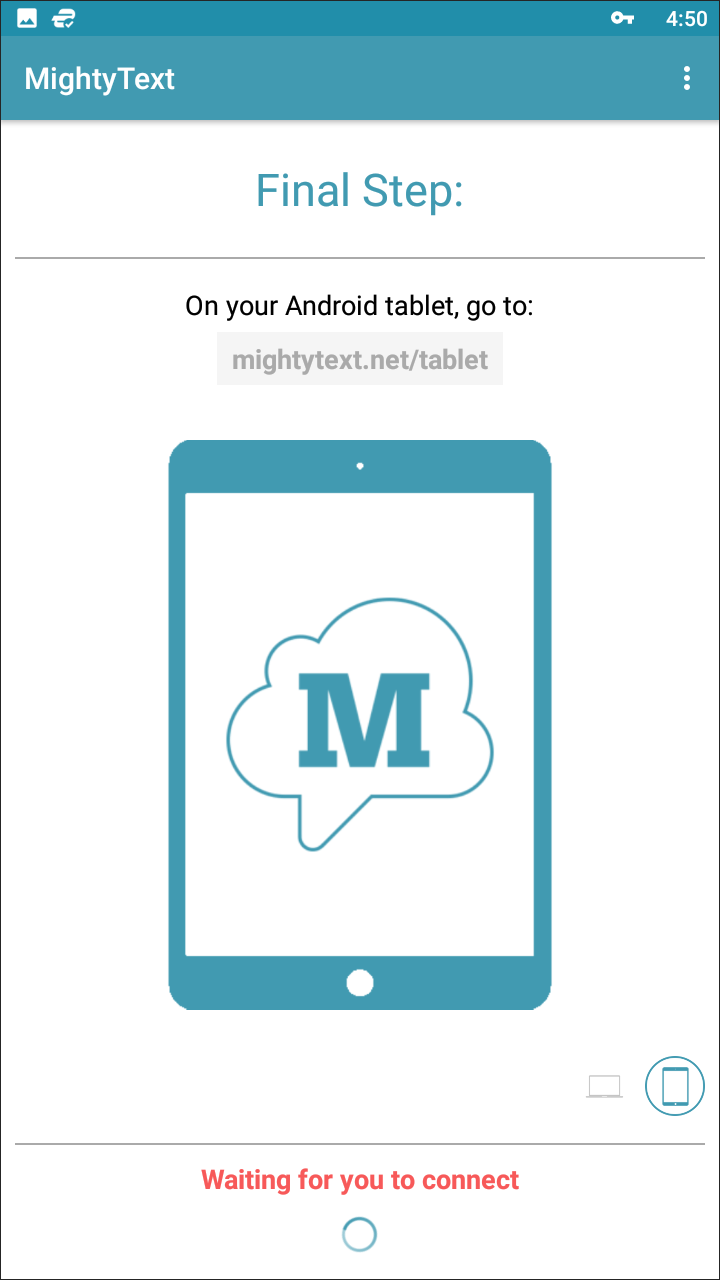
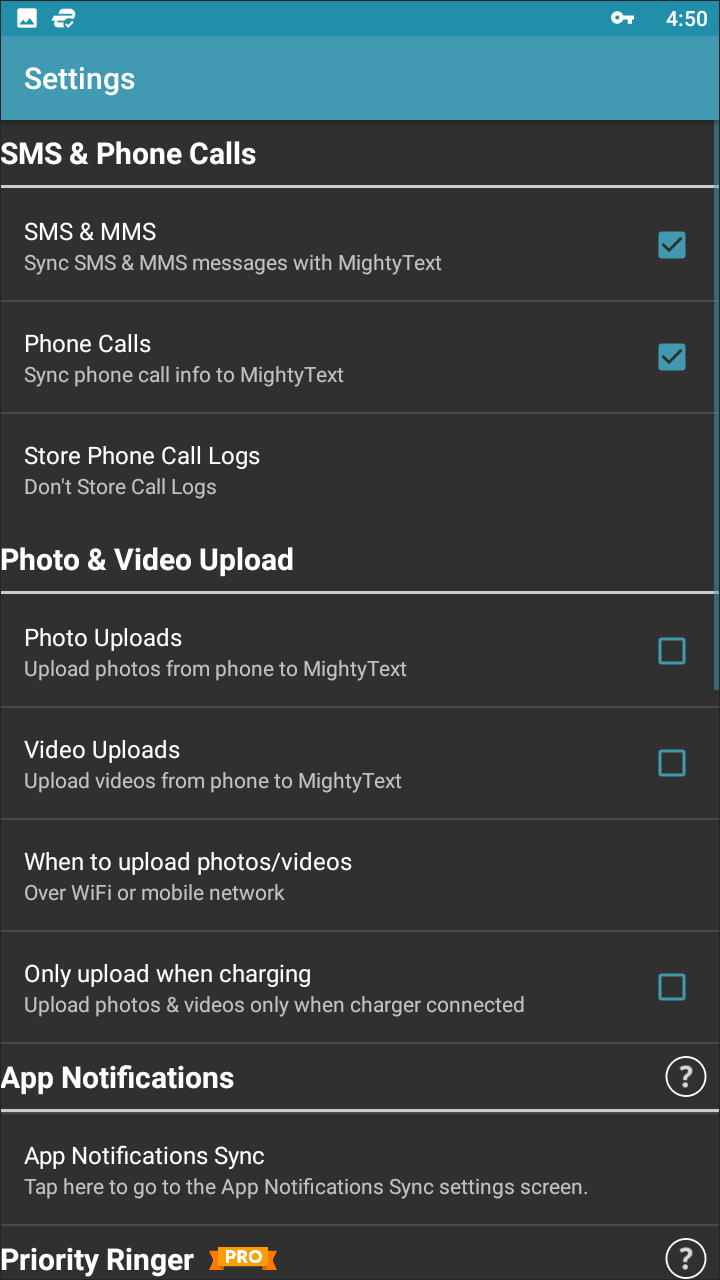
AirDroid may focus on implementing a file transfer protocol between your phone and computer, it’s MightyText, as you might imagine, that focuses primarily on syncing your device’s text messages between Chrome and your phone as a web app. Like AirDroid, MightyText has both extensions and web applications that sync with the MightyText app on your Android device. Similar to how iMessage works with iOS on your Mac, MightyText allows you to send both SMS and MMS from your computer using your phone’s number, all while syncing the messages in your actual inbox on your phone. MightyText also delivers on standard notifications from other apps like social media or emails, but outside of dismissing these notifications, you can’t act on them directly from your device. As you may expect, MightyText offers a Pro version of their app that adds scheduled messages, themes, notification live view, and most importantly, removes the 200 messages per month restriction from your device. Unfortunately for anyone hoping to grab MightyText Pro for a lower price than Pushbullet will want to change their expectations. The app runs users an insane $79.99 annually or $8.99 monthly, and at that price, you’re better off with any of the three apps listed above this one.
If you don’t see an app that should be here, let us know what it is